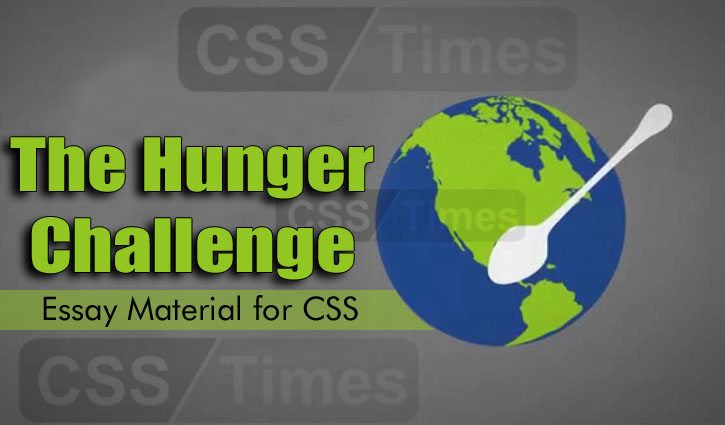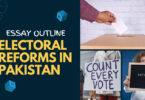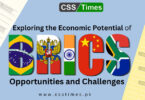Recent studies reveal rising inflation and unemployment creating high misery for people. Fuelled by these adverse reports, food insecurity, poverty and malnutrition problems had again momentarily hit national headlines, as they periodically do before being quickly displaced by political scandals.
Measuring these problems in Pakistan is made difficult by competing concepts, definitions and measurement approaches. Food security represents “regular access to sufficient and affordable nutritious food”. The 2011 National Nutritional Survey estimated nearly 60pc Pakistanis to be food insecure. Around 30pc had never experienced hunger but were not consuming quality nutritious food. In almost 20pc families, adults experienced some hunger.
Finally, in the remaining 10pc families even children experienced hunger. The report did not survey how frequent hunger was, making it difficult to evaluate its severity. Also, representationally, it seems odd to have conducted a once-in-a-decade national nutritional survey so soon after a once-in-a-century national calamity (2010 floods).
Nutritionally, the survey found around 15pc children being wasted (low weight-to-height), around 30pc being underweight for age, and around 40pc being stunted (low height-to-age). Around half in each category were severely affected. These statistics are broadly in line regionally with those of India and Bangladesh.
More encouragingly, the survey found almost 85pc families having bricked houses while almost 90pc used water which with simple treatment could become fit for drinking. However, knowledge about hygiene and nutrition issues was poor, especially among mothers. Finally, national poverty estimates vary widely across different sources, ranging between 10-40pc of the population!
It is difficult to decipher the disparate information from different surveys. However, combining these figures with my own field experiences, my educated guess is that around 15pc Pakistanis live in abject poverty. This is around 25-30 million people — nearly thrice Somalia’s population, the world’s poorest country.
Such people generally live in low-quality mud houses; consume highly unsafe water; have low incomes; and frequently experience hunger. A large proportion of their children are wasted, and consequently, at high risk of early death. Access to health and educational facilities is poor.
Geographically, such people live disproportionately in Balochistan and Sindh, especially its dry-zone southern rural districts eg, Dadu, Thatta and Badin. Characteristically, such people are usually landless, ethnic and religious minorities, low-caste and unsupported female-headed and elderly households.
Additionally, there is probably another 30-35pc of Pakistanis who have escaped abject poverty but have not attained secure middle-class status for basic needs to become assured. Such people generally live in bricked houses often made of kutcha bricks joined by mud, making them vulnerable during floods. They earn enough to afford adequate food and have access to potentially safe water.
Unfortunately, poor hygiene and nutrition knowledge reduce the benefits of this access. Their access to education and health facilities is not high-class. Children may not be disproportionately wasted and thus not seriously at danger of early death but suffer from stunting and underweight which affect their long-term mental and physical development.
While this situation may be better than many African and even some regional countries, it is a major blot for a country which enjoys middle-income status; has nuclear weapons, one of the world’s largest armies, and several dollar billionaires among its political leaders; and aspires to be an Islamic fortress. The factors responsible for this situation run from household to international levels. Household-level discrimination makes women and girls more vulnerable. Discrimination and exploitation by local elites makes landless, ethnic and religious minorities, low-caste and unsupported female-headed and elderly households more vulnerable. Nationally, government apathy towards the social sector and pursuit of anti-poor policies exacerbates misery for the poor. Internationally, global economic institutions (e.g the World Trade Organisation and the International Monetary Fund) favour rich countries/people and big corporations over the poor.
Pakistan’s situation reflects an ironic contrast: the success of the majority in escaping abject poverty through its own sheer hard work, and the government’s failure to support people escape the remaining problems by adequately funding the social sectors. The immediate task for the government is clear-cut. Locally, it must provide school supplementary feeding for malnourished children; improve health, education and population services; fund hygiene and nutritional awareness; and help empower women. Nationally, it must pursue macro-economic policies which minimise inflation and unemployment; introduce land reforms, and increase the market power of the poor. Internationally, it should partner with other developing countries, e.g India and Brazil, to ensure that international economic structures prioritise the interests of the poor. While the government struggles to deal even with current problems, larger future challenges are clouding the horizons, fed by looming demographic, ecological, technological, economic and political trends. Estimates vary but Pakistan’s population could reach more than 300 million by 2050 while global climate change will reduce water availability and land productivity.
Fortunately, suitable technological and economic policies can still help Pakistan deal with these looming ecological and demographic challenges. But the biggest challenge is whether Pakistan’s currently highly dysfunctional political institutions can shift gears to adopt the technological and economic changes in time before the ecological and demographic challenges hit with full force.
Between 1970 and now, Pakistan’s population tripled while absolute poverty halved even under modest 5pc average economic growth, largely due to private efforts and in the absence of supportive government policies. Unfortunately, Pakistan’s disadvantaged segments will not be able to repeat the earlier miracle given the scale of the looming challenges unless the government starts playing a more supportive role. Dr Niaz Murtaza
Check our Collection of English Essays specially for CSS
- Essay Outline: Electoral Reforms in Pakistan: Necessity and Challenges
- Health for All | Essay Outline for CSS PMS
- Exploring the Economic Potential of BRICS Countries: Opportunities and Challenges
- Art and Morality Essay Outline
- Instruction in Youth is Like Engraving in Stone | Complete Essay with Outline
- Public Office is a Public Trust | Complete CSS Essay
- Essay Outline “Good Governance is deeply rooted in Human Development”
- CSS Essay Outline | The Importance of Water Conservation and Management
- How to Write Effective Essay for CSS Exams
- How to Write Effective Essay on Economy? 7 Steps








[…] The Hunger Challenge | CSS Essay Material […]
Great effort.